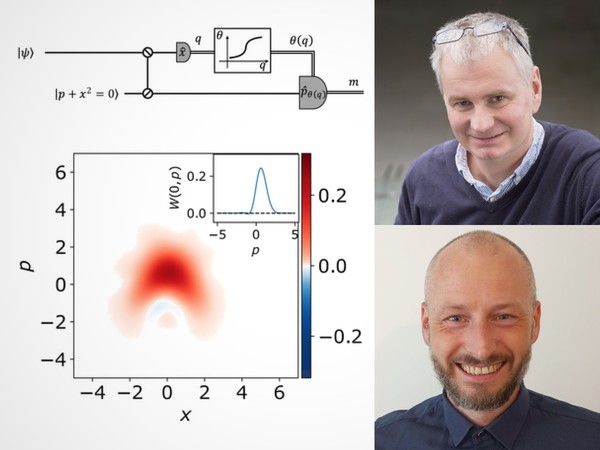Olomouc – An international group of researchers has progressed towards optical quantum computation by experimentally demonstrating a nonlinear measurement of an optical field. The unique experiment, the latest result of long-term fruitful collaboration between the University of Tokyo and Palacký University Olomouc, has been recently published in Nature Communications.
Quantum computers promise to take advantage of the quantum properties of our reality to offer a dramatic speed increase in some kinds of calculations. The fundamental difference is the superposition principle, which allows simultaneous evaluation of all the possible internal states of the computer. Many physical platforms are being considered for implementation, but the ultimate victor has yet to be found. Next to superconducting qubits and spins of individual atoms, light is being examined for its speed and technological maturity. It can be manipulated at room temperatures with high frequencies approaching the terahertz range, and its use is accompanied by developments in the communication industries.
The key ingredient to a working quantum computer is a set of nonlinear operations that can perform multiplicative operations on some attributes of quantum states. As opposed to linear operations (such as addition and subtraction), nonlinear operations cannot be efficiently simulated on classical computers and can therefore lead to the required increase in acceleration. In the recent experiment, nonlinearity was achieved by combining classical fast nonlinear light control and a specifically prepared light state with strong quantum properties. The nonlinear performance of the measurement circuit was then verified on a large set of different states of light.
“The collaboration resulted in developing and successfully verifying the fast and flexible electronic feed-forward technology usable on the states of light that will be crucial for implementing optical quantum computation. The feed-forward and auxiliary states of light with strong quantum properties were used to construct the nonlinear measurement,” explained Prof Radim Filip.
The employed electronic circuits are based on a look-up table storing the values of nonlinear functions that have been calculated in advance. During the actual measurement, the values are only recalled from memory, allowing for high speed and, consequently, only very little need for delay lines and the associated losses.
The measurement quality strongly depends on the quantum properties of the auxiliary states of light. “For this nonlinear measurement, we need quantum states with suppressed fluctuations in a specific nonlinear quadrature first generated in 2021. For measurement evaluation, we used weak laser light prepared with 27 different values of intensity and randomly distributed phase. 2.16 million data points were measured in total, and the results have shown the expected dependence on the signal,” described Assoc Prof Petr Marek.
The whole set of measured states and the corresponding measurement outcomes was used to reconstruct the effective states of the detectors for each particular measurement outcome. The obtained states showed a near total match with the theoretical predictions. “Furthermore, the inherent noise of the measurement was equal to the nonlinear fluctuations of the auxiliary states. We can therefore consider the experimental test of the nonlinear measurement successful,” summarized Marek.
“On our side, this project has been financially supported by grants from the Czech Science Foundation and EU H2020 and Horizon Europe grants NONGAUSS and CLUSTEC. Our long-term collaboration with the Tokyo group under Prof Akira Furusawa thus successfully continues, focusing on measurement-induced operations and other key technologies required for optical quantum computation. It incorporates new generations of students and junior researchers and draws attention on the government level because quantum technologies are quickly becoming a global priority,” concluded Filip.
